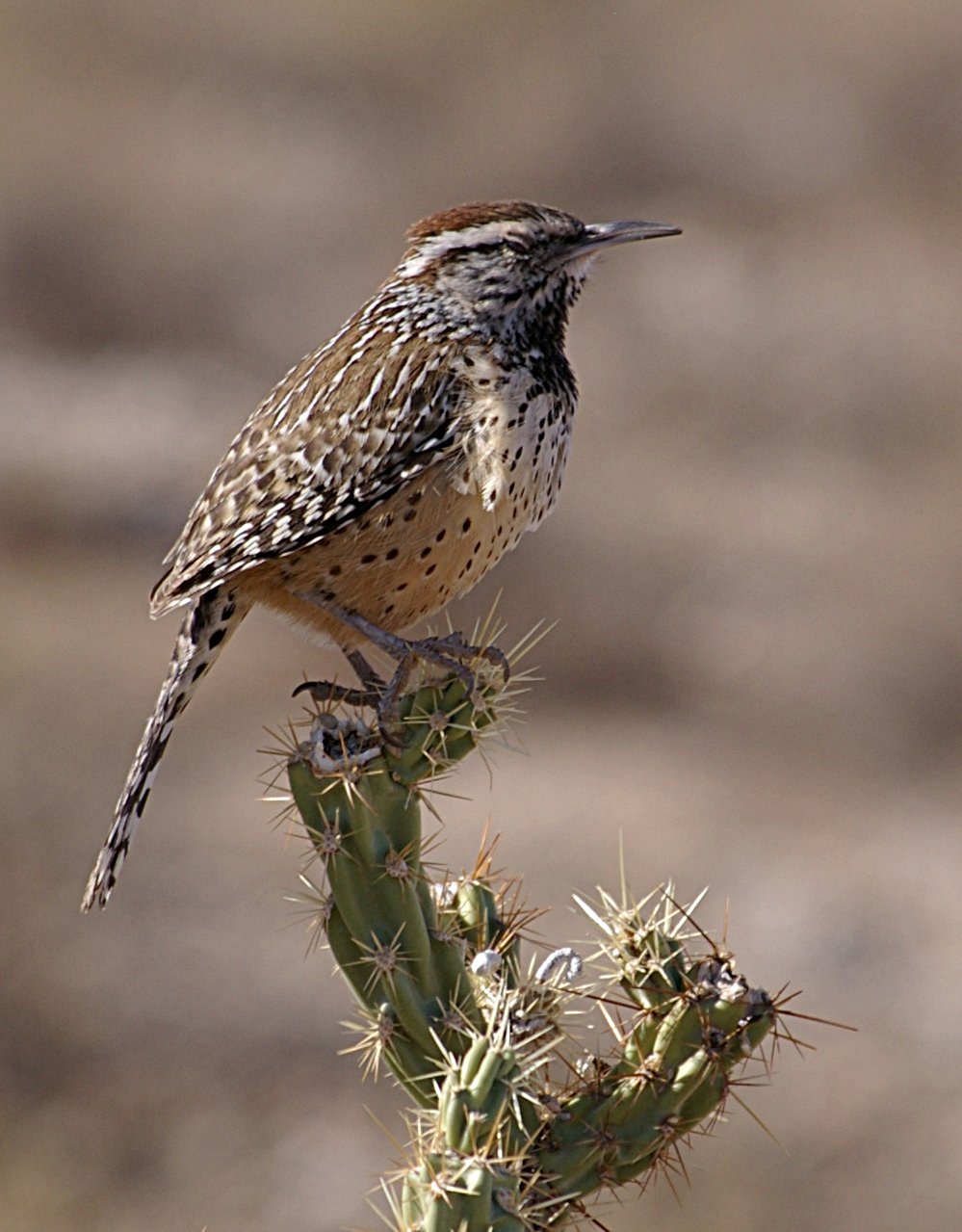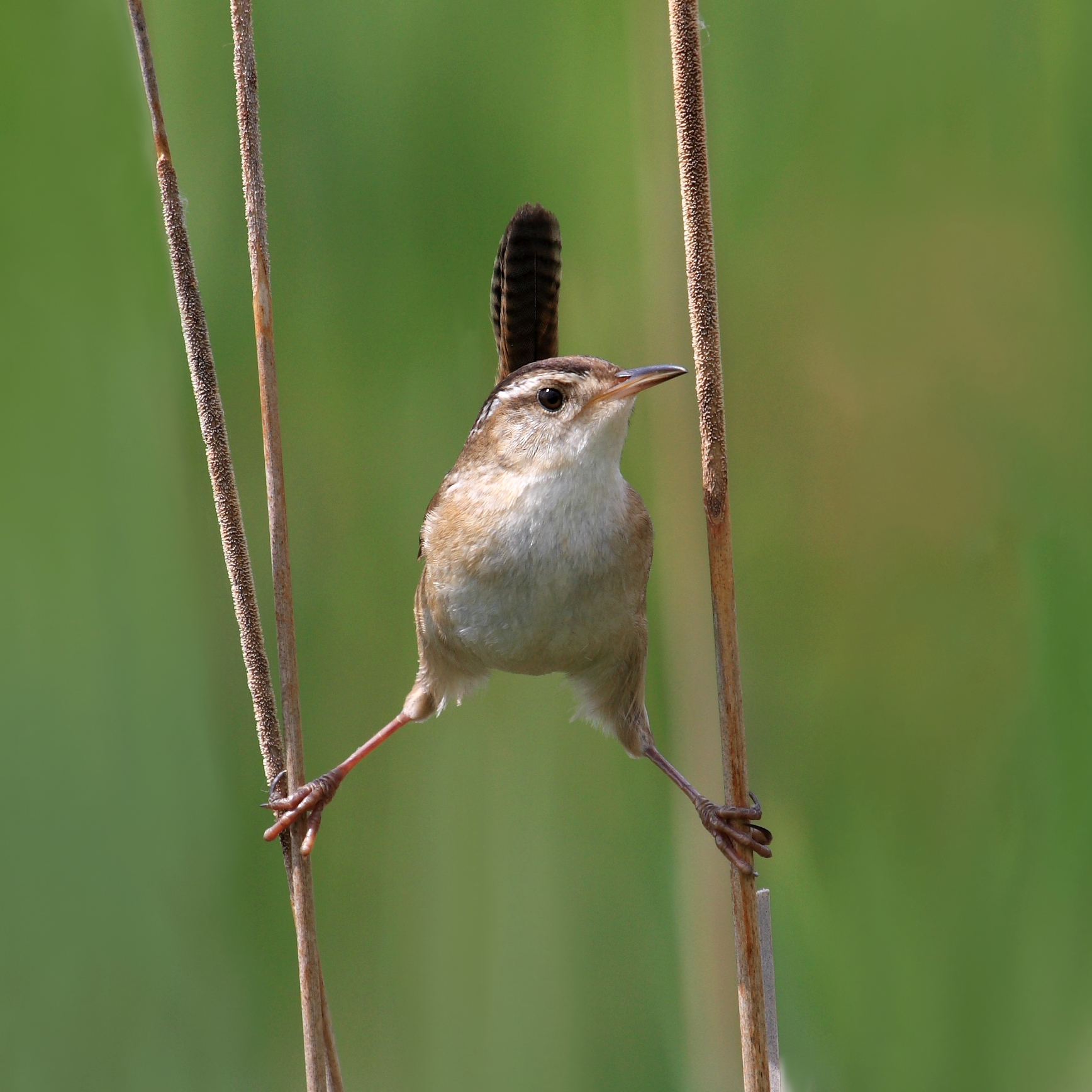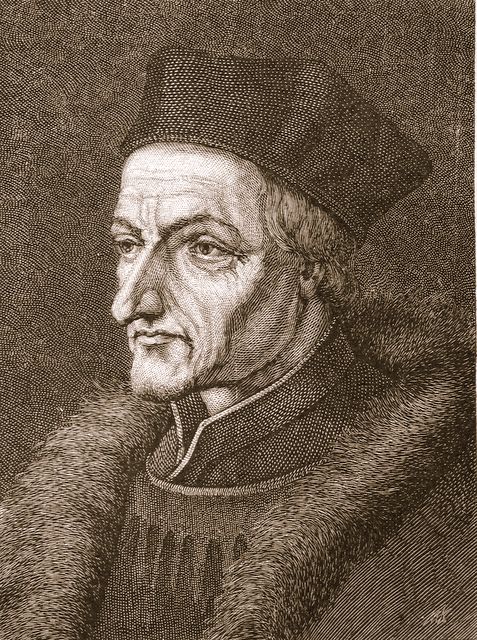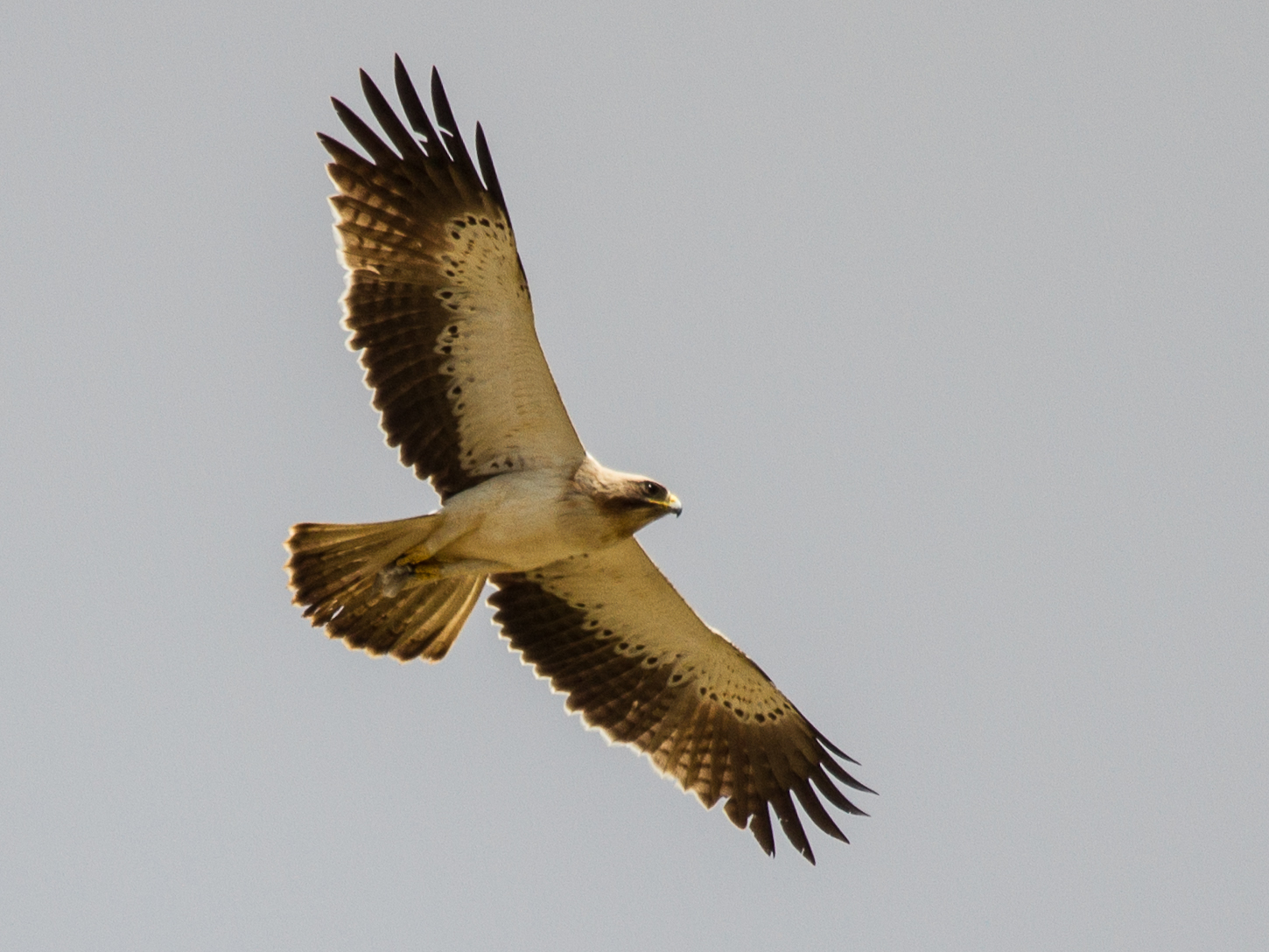|
Wrens
Wrens are a family (biology), family, Troglodytidae, of small brown passerine birds. The family includes 96 species and is divided into 19 genus, genera. All species are restricted to the New World except for the Eurasian wren that is widely distributed in the Old World. In Anglophone, Anglophone regions, the Eurasian wren is commonly known simply as the "wren", as it is the originator of the name. The name ''wren'' has been applied to other, unrelated birds, particularly the New Zealand wrens (Acanthisittidae) and the Australian wrens (Maluridae). Most wrens are visually inconspicuous though they have loud and often complex songs. Exceptions include the relatively large members of the genus ''Campylorhynchus'', which can be quite bold in their behaviour. Wrens have short wings that are barred in most species, and they often hold their tails upright. Wrens are primarily insectivorous, eating insects, spiders and other small invertebrates, but many species also eat vegetable matt ... [...More Info...] [...Related Items...] OR: [Wikipedia] [Google] [Baidu] |
Eurasian Wren
The Eurasian wren (''Troglodytes troglodytes'') or northern wren is a very small insectivorous bird, and the only member of the wren family Troglodytidae found in Eurasia and Africa (Maghreb). In Anglophone Europe, it is commonly known simply as the wren. It has a very short tail which is often held erect, a short neck and a relatively long thin bill. It is russet brown above, paler buff-brown below and has a cream buff supercilium. The sexes are alike. The species was once Lumpers and splitters, lumped with ''winter wren, Troglodytes hiemalis'' of eastern North America and ''Pacific wren, Troglodytes pacificus'' of western North America as the winter wren. The Eurasian wren occurs in Europe and across the Palearctic – including a belt of Asia from northern Iran and Afghanistan across to Japan. It is bird migration, migratory in only the northern parts of its range. It is also highly Polygyny in animals, polygynous, an unusual mating system for passerines. The scientific nam ... [...More Info...] [...Related Items...] OR: [Wikipedia] [Google] [Baidu] |
Marsh Wren
The marsh wren (''Cistothorus palustris'') is a small North American songbird of the wren Family (biology), family. It was formerly called the long-billed marsh wren to distinguish it from the sedge wren, then known as the short-billed marsh wren. Taxonomy The marsh wren was Species description, described by the Scottish-American ornithologist Alexander Wilson (ornithologist), Alexander Wilson in 1810 and given the binomial name ''Certhia palustris''. The current genus ''Cistothorus'' was introduced by the German ornithologist Jean Cabanis in 1850. There are 15 recognised subspecies. Etymology: from Greek 'κιστος' (''cistos'', "a shrub") and 'θουρος' (''thouros'', "leaping, or running through") and Latin 'palustris' ("marshy"). Description Adults have brown upperparts with a light brown belly and flanks and a white throat and breast. The back is black with white stripes. They have a dark cap with a white line over the eyes and a short thin bill. The male's song is ... [...More Info...] [...Related Items...] OR: [Wikipedia] [Google] [Baidu] |
Goldcrest
The goldcrest (''Regulus regulus'') is a very small passerine bird in the kinglet family. Its colourful golden Crest (feathers), crest feathers, as well as being called the "king of the birds" in European folklore, gives rise to its English and scientific names. The scientific name, ''R. regulus'', means 'petty king' or prince. Several subspecies are recognised across the very large distribution range that includes much of the Palearctic and the islands of Macaronesia and Iceland. Birds from the north and east of its breeding range bird migration, migrate to winter further south. This kinglet has greenish upper-parts, whitish under-parts, and has two white wingbars. It has a plain face contrasting black irises and a bright head crest, orange and yellow in the male and yellow in the female, which is display (zoology), displayed during breeding. It superficially resembles the common firecrest (''Regulus ignicapilla''), which largely shares its European range, but the latter's ... [...More Info...] [...Related Items...] OR: [Wikipedia] [Google] [Baidu] |
Kinglet
A kinglet is a small bird in the family Regulidae. Species in this family were formerly classified with the Old World warblers. "Regulidae" is derived from the Latin word ''regulus'' for "petty king" or prince, and refers to the coloured crowns of adult birds. This family has representatives in North America and Eurasia. There are six species in this family; one, the Madeira firecrest, ''Regulus madeirensis'', was only recently split from common firecrest as a separate species. One species, the ruby-crowned kinglet, differs sufficiently in its voice and plumage to be afforded its own genus, ''Corthylio''. Description Kinglets are among the smallest of all passerines, ranging in size from and weighing ; the sexes are the same size. They have medium-length wings and tails, and small needle-like bills. The plumage is overall grey-green, offset by pale wingbars, and the tail tip is incised. Five species have a single stiff feather covering the nostrils, but in the ruby-crowned k ... [...More Info...] [...Related Items...] OR: [Wikipedia] [Google] [Baidu] |
Johann Geiler Von Kaisersberg
Johann Geiler von Kaysersberg (16 March 1445 – 10 March 1510) was a priest, considered one of the greatest of the popular preachers of the 15th century. He was closely connected with the Renaissance humanists of Strasbourg, whose leader was the well-known Jakob Wimpfeling (1450–1528), called "the educator of Germany". Like Wimpfeling, Geiler was a secular priest; both fought the ecclesiastical abuses of the age, but not in the spirit of Martin Luther and his adherents. They looked, instead, for salvation and preservation only in the restoration of Christian morals in Church and State through the faithful maintenance of the doctrines of the Church. However the moral reforms of Johann Geiler laid the groundwork for the Protestant reformation in Strasbourg. Early life and education He was born at Schaffhausen, but from 1448 passed his childhood and youth at Kaysersberg in Upper Alsace. His grandfather, who brought him up, lived there. The father was killed by a hunting-a ... [...More Info...] [...Related Items...] OR: [Wikipedia] [Google] [Baidu] |
Medieval
In the history of Europe, the Middle Ages or medieval period lasted approximately from the 5th to the late 15th centuries, similarly to the post-classical period of World history (field), global history. It began with the fall of the Western Roman Empire and transitioned into the Renaissance and the Age of Discovery. The Middle Ages is the middle period of the three traditional divisions of Western history: classical antiquity, the medieval period, and the modern period. The medieval period is itself subdivided into the Early Middle Ages, Early, High Middle Ages, High, and Late Middle Ages. Population decline, counterurbanisation, the collapse of centralised authority, invasions, and mass migrations of tribes, which had begun in late antiquity, continued into the Early Middle Ages. The large-scale movements of the Migration Period, including various Germanic peoples, formed new kingdoms in what remained of the Western Roman Empire. In the 7th century, North Africa and the ... [...More Info...] [...Related Items...] OR: [Wikipedia] [Google] [Baidu] |
Natural History (Pliny)
The ''Natural History'' () is a Latin work by Pliny the Elder. The largest single work to have survived from the Roman Empire to the modern day, the ''Natural History'' compiles information gleaned from other ancient authors. Despite the work's title, its subject area is not limited to what is today understood by natural history; Pliny himself defines his scope as "the natural world, or life". It is encyclopedic in scope, but its structure is not like that of a modern encyclopedia. It is the only work by Pliny to have survived, and the last that he published. He published the first 10 books in AD 77, but had not made a final revision of the remainder at the time of Pliny the Elder#Death, his death during the Eruption of Mount Vesuvius in 79 AD, AD 79 eruption of Vesuvius. The rest was published posthumously by Pliny's nephew, Pliny the Younger. The work is divided into 37 books, organised into 10 volumes. These cover topics including astronomy, mathematics, geography, ethn ... [...More Info...] [...Related Items...] OR: [Wikipedia] [Google] [Baidu] |
Pliny The Elder
Gaius Plinius Secundus (AD 23/24 79), known in English as Pliny the Elder ( ), was a Roman Empire, Roman author, Natural history, naturalist, and naval and army commander of the early Roman Empire, and a friend of the Roman emperor, emperor Vespasian. He wrote the encyclopedic (''Natural History''), a comprehensive thirty-seven-volume work covering a vast array of topics on human knowledge and the natural world, which became an editorial model for encyclopedias. He spent most of his spare time studying, writing, and investigating natural and geographic phenomena in the field. Among Pliny's greatest works was the twenty-volume ''Bella Germaniae'' ("The History of the German Wars"), which is Lost literary work, no longer extant. ''Bella Germaniae'', which began where Aufidius Bassus' ''Libri Belli Germanici'' ("The War with the Germans") left off, was used as a source by other prominent Roman historians, including Plutarch, Tacitus, and Suetonius. Tacitus may have used ''Bella Ger ... [...More Info...] [...Related Items...] OR: [Wikipedia] [Google] [Baidu] |
Historia Animalium
''History of Animals'' (, ''Ton peri ta zoia historion'', "Inquiries on Animals"; , "History of Animals") is one of the major texts on biology by the ancient Greek philosopher Aristotle. It was written in sometime between the mid-fourth century BC and Aristotle's death in 322 BC. Generally seen as a pioneering work of zoology, Aristotle frames his text by explaining that he is investigating the ''what'' (the existing facts about animals) prior to establishing the ''why'' (the causes of these characteristics). The book is thus an attempt to apply philosophy to part of the natural world. Throughout the work, Aristotle seeks to identify differences, both between individuals and between groups. A group is established when it is seen that all members have the same set of distinguishing features; for example, that all birds have feathers, wings, and beaks. This relationship between the birds and their features is recognized as a universal. The ''History of Animals'' contains many ... [...More Info...] [...Related Items...] OR: [Wikipedia] [Google] [Baidu] |
Aristotle
Aristotle (; 384–322 BC) was an Ancient Greek philosophy, Ancient Greek philosopher and polymath. His writings cover a broad range of subjects spanning the natural sciences, philosophy, linguistics, economics, politics, psychology, and the arts. As the founder of the Peripatetic school of philosophy in the Lyceum (classical), Lyceum in Athens, he began the wider Aristotelianism, Aristotelian tradition that followed, which set the groundwork for the development of modern science. Little is known about Aristotle's life. He was born in the city of Stagira (ancient city), Stagira in northern Greece during the Classical Greece, Classical period. His father, Nicomachus (father of Aristotle), Nicomachus, died when Aristotle was a child, and he was brought up by a guardian. At around eighteen years old, he joined Plato's Platonic Academy, Academy in Athens and remained there until the age of thirty seven (). Shortly after Plato died, Aristotle left Athens and, at the request ... [...More Info...] [...Related Items...] OR: [Wikipedia] [Google] [Baidu] |
Eagle
Eagle is the common name for the golden eagle, bald eagle, and other birds of prey in the family of the Accipitridae. Eagles belong to several groups of Genus, genera, some of which are closely related. True eagles comprise the genus ''Aquila (bird), Aquila''. Most of the 68 species of eagles are from Eurasia and Africa. Outside this area, just 14 species can be found—two in North America, nine in Central and South America, and three in Australia. Eagles are not a natural group but denote essentially any kind of bird of prey large enough to hunt sizeable (about 50 cm long or more overall) vertebrates. Etymology The word "eagle" is borrowed into English from and , both derived ultimately from ("eagle"). It is cognate with terms such as , and . It is broadly synonymous with the less common English term "erne" or "earn", deriving from , from , in which it acts as the usual word for the bird. The Old English term is turn derived from and is cognate with other synonymous ... [...More Info...] [...Related Items...] OR: [Wikipedia] [Google] [Baidu] |
Fable
Fable is a literary genre defined as a succinct fictional story, in prose or verse, that features animals, legendary creatures, plants, inanimate objects, or forces of nature that are anthropomorphized, and that illustrates or leads to a particular moral lesson (a "moral"), which may at the end be added explicitly as a concise maxim or saying. A fable differs from a parable in that the latter ''excludes'' animals, plants, inanimate objects, and forces of nature as actors that assume speech or other powers of humankind. Conversely, an animal tale specifically includes talking animals as characters. Usage has not always been so clearly distinguished. In the King James Version of the New Testament, "" ("'' mythos''") was rendered by the translators as "fable" in the First Epistle to Timothy, the Second Epistle to Timothy, the Epistle to Titus and the First Epistle of Peter. A person who writes fables is referred to as a fabulist. Global history The fable is one of the m ... [...More Info...] [...Related Items...] OR: [Wikipedia] [Google] [Baidu] |









